As promised, we’re continuing our sharing about building a camp trailer that can function as a durable structure in the alpine mountain environment. Here is an alternative to the yurt obsession.
Many options exist for framing this type of structure (google keywords such as “tiny house.”) If you’re not dealing with snow loads on your roof, you can do walls with 2×2 instead of 2×4 or 2×6 stud framing, and top with a flat roof raftered with nothing more than 2x4s. That’s how el-cheapo mobile homes are constructed.
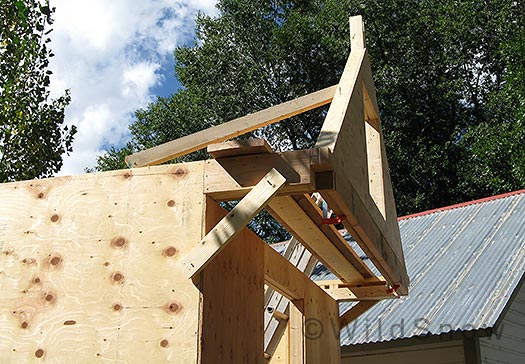
Front of the backcountry skiing trailer in framing stage. We wanted an overhang over the front door, and a sleeping loft, so I extended the loft out about 18 inches. That combined with gable eave should give a nice weather protective overhang. I engineered some massive structures to support the overhang, as well as installing two steel knee braces in the final finish.
In our case, we needed something with structural strength we could locate at altitude in Colorado and leave unattended if necessary. That meant some pant seat engineering. So what I did was find a few roof load engineering tables on the web, and ascertained that our “square” (45 degree) gable roof design would be plenty strong framed with 2×6 on 24 inch centers. But just to be sure, since I’m not an engineer, I doubled up every other rafter. Not taking any chances.
Overall, our construction methods are simple and could be scaled to any sort of wall framing. We insulated with blue foam, sheathed with 5/8 plywood oriented horizontally for trailer strength, and paneled the lower inside walls with 3/8 ply, thus making the walls into incredibly strong box trusses so the trailer can be transported without coming apart or sagging fore or aft of the axles which would be embarrassing, though the event might make a good joke for a Jeff Foxworthy standup. Something like, “you know you’re a redneck if you decide to move and your house blows off your trailer.”
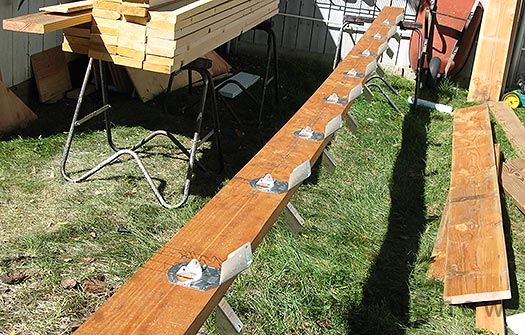
The ridge board in most site framed hip roofs is nothing more than a template for locating the rafters. But I wanted our ridge to provide a strong cantilever to support the eaves at both ends, so I used a nice microlam. Yes, total engineering overkill. Like one of my carpenter friends said when he visited our yard where we were building the thing 'wow, that's strong.' We also spent quite a bit of time screwing everything together instead of nailing, so if ever necessary the roof can be removed for transport under tree branches and that sort of thing. The Simpson brand steel rafter connectors on the ridge board are part of that plan. As the trailer stands today, a few guys could have the roof totally off in a day, including labeling and kitting out for re-install. The final roof is steel, Pro Panel brand.
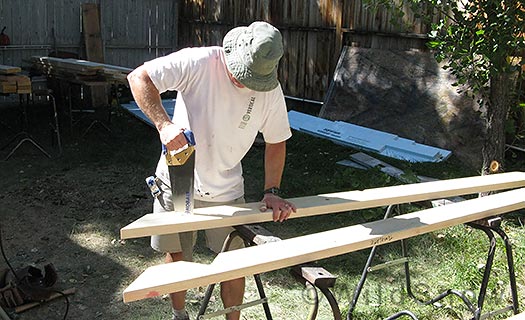
Classic hip roof bird mouths being cut in the rafters.
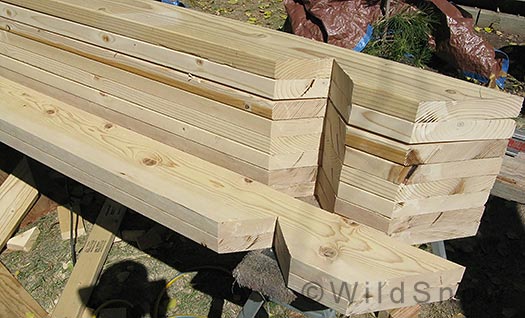
Rafters ready for install.
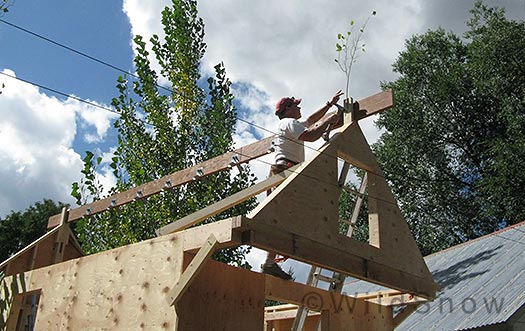
Yeah, this is really just a shed, but tradition rules.
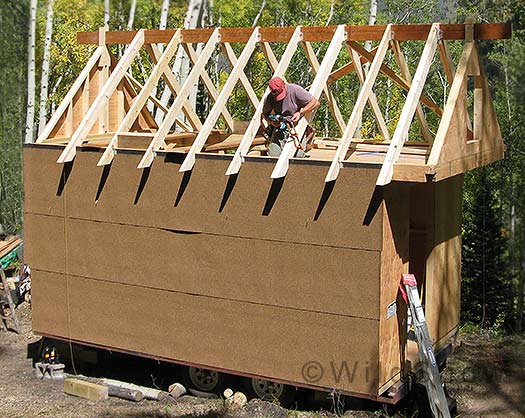
Roof framing just about ready for sheathing. Again, we used 5/8 plywood for super strength. In this photo you can see we opted for a very simple exterior covering of mineral roll roofing. I've noticed this material has become more and more common for such applications. Not as durable as some forms of siding, but very quick. Metal corner trim and metal skirt was added later for durability and to avoid providing gnaw fodder for porcupines.
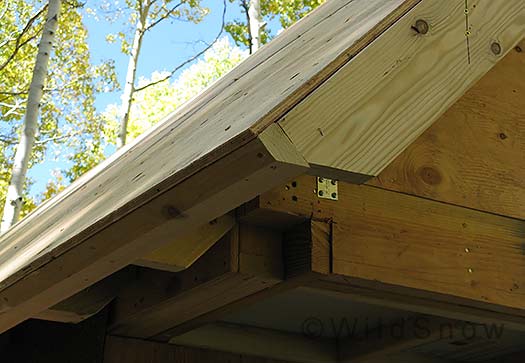
Hip roof eaves are always a creative endeavor, that is unless you happen to have a set of prints from an architectural firm obsessed with details. And in my experience, those non-carpenter pencil pushers never got it right anyway. Of course, in this case the only architect was the muse.
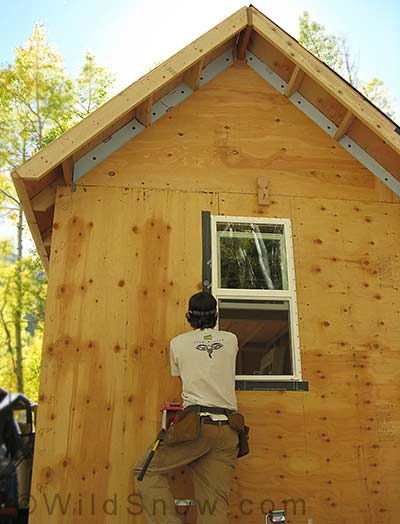
Getting those Lowes budget windows going in. Important for any winter use structure, good low-e windows don't produce damaging interior condensation.
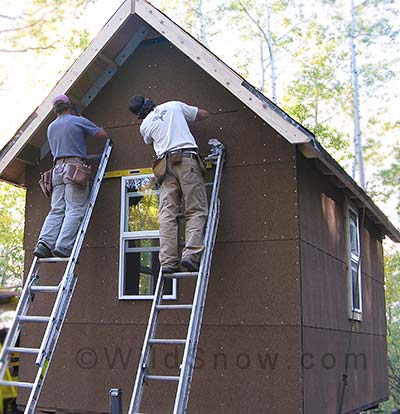
Not exactly a tarpaper shotgun shack, but perhaps the mineral roll roofing siding qualifies it anyway. We'll have to get Jeff Foxworthy on the scene and see what he says.
Yep, Foxworthy won’t be able to accuse us of owning a home that has more miles on it than our car, but I did have to think for a moment to remember that the hot tub we’re planning isn’t a stolen bathtub.
WildSnow.com publisher emeritus and founder Lou (Louis Dawson) has a 50+ years career in climbing, backcountry skiing and ski mountaineering. He was the first person in history to ski down all 54 Colorado 14,000-foot peaks, has authored numerous books about about backcountry skiing, and has skied from the summit of Denali in Alaska, North America’s highest mountain.
